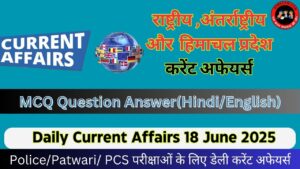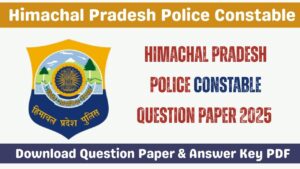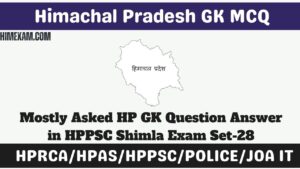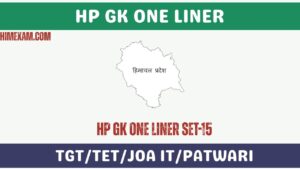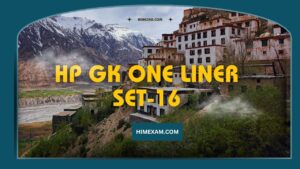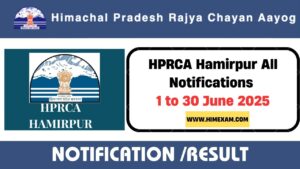Table of Contents
ToggleGandhi and His Early Movements MCQ Question Answer In English
||Gandhi and His Early Movements MCQ Question Answer In English||Gandhi and His Early Movements MCQ In English||
1. M.K. Gandhi was a supporter of
(A) Marxist socialism
(B) Category socialism
(C) Idealism
(D) Philosophical anarchism
2. Where is Phoenix Farm?
(A) Suratgarh
(B) Essex England
(C) Durban (South Africa)
(D) Kampala
3. Karamchand Gandhi was Diwan of
(A) Porbandar
(B) Rajkot
(C) Bikaner
(D) All of these
4. Name of the magazine published by Mahatma Gandhi during his stay in South Africa, was
(A) Navjeevan
(B) India Gazette
(C) Africaner
(D) Indian opinion
5. The twin principles of Mahatma Gandhi’s Ram Rajya were
(A) Abolishment of untouchability and temperance
(B) Truth and non-violence
(C) Khadi and Spinning-wheel
(D) Right means and right ends
6. According to Gandhiji NonViolence is
(A) A way to attain truth
(B) A way to win political freedom
(C) The only way to realize God
(D) An end in itself
7. Which of the following may be true regarding Gandhi?
(A) A Marxist without Marxism
(B) A Socialist without Socialism
(C) An Individualist without Individualism
(D) An Individualist among Socialist and a Marxist among Socialist
8. Which one of the following was the last step in the Gandhian strategy of Satyagraha?
(A) Boycott
(B) Picket
(C) Fast
(D) Strike
9. Which of the following statements is not true as per Gandhian Principle?
(A) The aim of Satyagrahi is to defeat the enemy
(B) The weapon of Satyagraha is Ahimsa
(C) Satyagrahi should be firm in his belief
(D) Satyagrahi should have no ill feeling towards his enemies
10. According to Gandhiji, the Cruelest form of violence is
(A) Persistence of poverty
(B) Killing of cows
(C) Killing of human beings
(D) Torture of women and children
11. What idea is given by Gandhiji for family planning?
(A) Self-control
(B) Sterilization
(C) Restrain
(D) Loop
12. In which year Gandhi returned from South Africa?
(A) 1915
(B) 1917
(C) 1916
(D) 1918
13. How many years did Gandhiji live in South Africa?
(A) 20 years
(B) 21 years
(C) 16 years
(D) 15 years
14. In which of the following railway stations of South Africa, Mahatma Gandhi was thrown out of the train?
(A) Johannesburg
(B) Pietermaritzburg
(C) Durban
(D) Pretoria
15. Which one of the following sessions of Indian National Congress was for the first time attended by M.K. Gandhi?
(A) Lucknow Session, 1916
(B) Calcutta Session, 1901
(C) Amritsar Session, 1919
(D) Nagpur Session, 1920
16. Sabarmati Ashram established by Mahatma Gandhi during India’s independence movement, is located on the outskirts of
(A) Gandhinagar
(B) Ahmedabad
(C) Rajkot
(D) Wardha
17. Mahatma Gandhi set up an Ashram on the banks of Sabarmati near Ahmedabad is known as
(A) Sarbarmati Ashram
(B) Harijan Ashram
(C) Satyagraha Ashram
(D) Swaraj Ashram
18. Which one of the following Ashrams related to Mahatma Gandhi, is the oldest?
(A) Sabarmati
(B) Phoenix
(C) Wardha
(D) Sadaqat
19. Where did Gandhiji adopt ‘Seva Dharma’?
(A) Mumbai
(B) Shantiniketan
(C) South Africa
(D) Pune
20. Who among the following was the ‘Political Guru’ of Mahatma Gandhi?
(A) C.R. Das
(B) Dadabhai Naoroji
(C) Tilak
(D) G.K. Gokhale
21. As per Mahatma Gandhi politics meant
(A) Religionless politics
(B) Activity for public welfare
(C) Truthless politics
(D) None of the above
22. Which of the following is not a feature of politics of the Gandhian model?
(A) Ethics
(B) Religion
(C) Humanity
(D) Authority
23. Who amongst the following coined the word ‘Satyagraha’?
(A) Harilal Gandhi
(B) Mahatma Gandhi
(C) Ramdas Gandhi
(D) Manilal Gandhi
24. During India’s struggle for independence which was the first to start ‘Satyagraha’?
(A) Sardar Patel
(B) Jawaharlal Nehru
(C) Vinoba Bhave
(D) Mahatma Gandhi
25. Mohandas Karamchand Gandhi is best known for which of the following?
(A) Use of passive resistance to achieve Indian independence
(B) Desire to establish an Islamic nation
(C) Opposition to Hindus holding political office
(D) Encouragement of violence to end British rule
26. Who among of the following had told ‘destruction is the best method of dealing with the foreign clothes’?
(A) Rabindra Nath Tagore
(B) Mahatma Gandhi
(C) Chitranjan Das
(D) Subhash Chandra Bose
27. Gandhi’s boycott of British made products was effective because British considered India, a major
(A) Shipping centre
(B) Industrial centre
(C) Market for manufactured goods
(D) Source of mineral resources
28. Mahatma Gandhi said that some of his deepest convictions were reflected in a book titled, ‘Unto This Last’ and the book transformed his life. What was the message from the book that transformed Mahatma Gandhi?
(A) Uplifting the oppressed and poor is the moral responsibility of an educated man
(B) The good of individual is contained in the good of all
(C) The life of celibacy and spiritual pursuit are essential for a noble life
(D) All the statements (A), (B) and (C) are correct in this context
||Gandhi and His Early Movements MCQ Question Answer In English||Gandhi and His Early Movements MCQ In English||
29. Whose work have influenced Gandhian concept?
(A) Ruskin
(B) Thoreau
(C) Tolstoy
(D) All of these
30. Which of the following Movement is not related with Gandhiji?
(A) Swadeshi Movement
(B) Khilafat Movement
(C) Individual Satyagraha
(D) Quit India Movement
31. Which one of the following Satyagrahas was not lead by Mahatma Gandhi?
(A) Quit India Movement
(B) Civil Disobedience
(C) Bardoli
(D) Kheda
32. Which of the following statement is/are correct regarding Gandhi?
(A) Fought hard to improve the status of casteless untouchables
(B) Launched the Non-Cooperation Movement
(C) Began the Civil Disobedience Movement
(D) All of the above
33. Who was the first person to call Mahatma Gandhi, ‘Father of Nation’?
(A) Jawaharlal Nehru
(B) Vallabhbhai Patel
(C) C. Rajagopalachari
(D) Subhash Chandra Bose
34. The prefix ‘Mahatma’ was added with the name of Gandhi
(A) During Champaran Satyagraha
(B) During the Satyagraha against Rowlatt Act
(C) In the Amritsar Session of the Indian National Congress, 1919
(D) At the beginning of the Khilafat Movement
35. Who of the following called Gandhiji ‘Mahatma’ for the first time?
(A) Jawaharlal Nehru
(B) Madan Mohan Malviya
(C) Rabindra Nath Tagore
(D) Subhash Chandra Bose
36. Who was the secretary of Mahatma Gandhi during Noakhali?
(A) Nirmal Kumar Bose
(B) Mahadeo Desai
(C) Pyare Lal
(D) Ballabhbhai Patel
37. In which of the following Satyagraha movements, did Gandhiji not participate directly?
(A) Rajkot Satyagraha
(B) Khera Satyagraha
(C) Vaikom Satyagraha
(D) Non-Co-operation Movement
38. When did Mahatma Gandhi come to Chhattisgarh first?
(A) 2 October, 1906
(B) 20 December, 1920
(C) 1 July, 1937
(D) 9 September, 1942
39. Who among the following Gandhian followers was a teacher by profession?
(A) A.N. Sinha
(B) Braj Kishore Prasad
(C) J.B. Kriplani
(D) Rajendra Prasad
40. Who among the following capitalists served as an AICC treasurer for many years and went to jail in 1930?
(A) G.D. Birla
(B) Jamnalal Bajaj
(C) J.R.D. Tata
(D) Balchand Hirachand
41. “Indian cotton merchant, banker; Congress man and a close associate of Mahatma Gandhi”. The description fits with
(A) G.D. Birla
(B) M.R. Jayakar
(C) Jamnalal Bajaj
(D) V.S. Shrinivas Shastri
42. Mahatma Gandhi’s close English compatriot during the freedom movement was
(A) Thomas Moore
(B) A.O. Hume
(C) Charles Andrews
(D) William Wavell
43. Which one of the following Jails was named as ‘Mandir’ by Gandhiji?
(A) Naini
(B) Yarvada
(C) Cellular (Port Blair)
(D) Aghakhan Palace
44. At the time of India’s Independence, Mahatma Gandhi was
(A) A member of Congress Working Committee
(B) Not a member of the Congress
(C) The President of the Congress
(D) The General Secretary of the Congress
45. On the death of Mahatma Gandhi who said, ‘the light has gone out of our lives’?
(A) Lord Mountbatten
(B) Dr. Rajendra Prasad
(C) Dr. S. Radhakrishnan
(D) Jawaharlal Nehru
46. Who addressed Gandhiji as ‘oneman boundary force’?
(A) Churchill
(B) Attlee
(C) Mountbatten
(D) Simon
47. Who one of the following had commanded Mahatma Gandhi to spend the first year in India ‘with his ears open but his mouth shut’?
(A) Dadabhai Naoroji
(B) Bal Gangadhar Tilak
(C) Feroz Shah Mehta
(D) Gopal Krishna Gokhale
48. Who had advised Gandhiji to be as an observer and student in the country for one year before entering in Indian Politics?
(A) Annie Besant
(B) Bal Gangadhar Tilak
(C) Gopal Krishna Gokhale
(D) Rabindra Nath Tagore
49. Who among the following used to say ‘Wrong means never take us to right ends’?
(A) Sardar Patel
(B) M.K. Gandhi
(C) Lala Lajpat Rai
(D) Jawaharlal Nehru
50. Who among the following was the strong supporter of the principle that ‘Which is morally wrong, can never be politically right’?
(A) Jawaharlal Nehru
(B) Sardar Patel
(C) M.K. Gandhi
(D) C. Rajagopalachari
51. Gandhiji started his first Satyagraha against
(A) British attack on Turkey
(B) Government of India Act, 1935
(C) Payment of low wages to workers
(D) Rowlatt Act
52. In which of the following movements did Mahatma Gandhi make the first use of hunger strike as a weapon?
(A) Non-Co-operation Movement
(B) Rowlatt Satyagraha
(C) Ahmedabad Srike
(D) Bardoli Satyagraha
53. Mahatma Gandhi delivered his first public speech in India at
(A) Bombay
(B) Lucknow
(C) Champaran
(D) Varanasi
54. From where did Gandhiji launch his mission of freeing bonded labour?
(A) Champaran
(B) Calcutta
(C) Bombay
(D) Gorakhpur
55. Who participated in ‘Satyagraha’ started by Gandhiji at Ahmedabad in 1917-18?
(A) Cultivators class
(B) Industrial workers
(C) Public
(D) Labourers
56. Which of the following struggles of Mahatma Gandhi was related to industrial workers?
(A) Champaran Satyagraha
(B) Ahmedabad Satyagraha
(C) Kheda Satyagraha
(D) None of the above
57. For whom among the following was Ahmedabad Satyagraha launched?
(A) Farmers
(B) Cotton Mill Workers
(C) Jewellery artisans
(D) Press Freedom
58. Which of the following pairs is correctly matched regarding propounding the principle of Trusteeship of Mahatma Gandhi?
(A) South Africa – 1903
(B) London – 1904
(C) Delhi – 1905
(D) Ahmedabad – 1906
59. Which one of the following statements is not correct about Gandhian economy?
(A) He laid emphasis on the economy based on non-violence
(B) Centralisation lead to exploitation and inequality, hence centralisation is opponent of formation of non-violent society
(C) He was not in favour of mechanisation in India
(D) He did not favour mechanisation in U.S.A.
60. According to M.K. Gandhi socioeconomic improvement of untouchables can be brought about
(A) By their temple entry
(B) By providing grant-in-aid
(C) By earmarking funds for their socio-economic development
(D) By establishing cottage industry for them
61. What does ‘Gandhian Innovation’ mean?
(A) To produce more
(B) To produce in domestic economy
(C) To produce for consumption
(D) To produce more from less input for more people
62. Which event occurred first?
(A) Kheda Satyagraha
(B) Civil Disobedience Movement
(C) Non-Co-operation Movement
(D) Champaran Satyagraha
63. Tinkathia System in Champaran meant
(A) Cultivation of Indigo on the 3/20 area of land
(B) Cultivation of Indigo on 3/19 area of land
(C) Cultivation of Indigo on 3/18 area of land
(D) None of the above
||Gandhi and His Early Movements MCQ Question Answer In English||Gandhi and His Early Movements MCQ In English||
64. At which place of Bihar, Gandhiji started Satyagraha movement for the first time in India?
(A) Patna
(B) Gaya
(C) Madhubani
(D) Champaran
65. Gandhiji’s Champaran Movement was for
(A) The Security of the rights of Harijans
(B) Civil Disobedience Movement
(C) Maintaining of unity of Hindu Society
(D) Solving the problems of Indigo worker
66. Champaran Satyagraha was related to
(A) Ezaredari
(B) Tinkathia
(C) Jenmis
(D) None of these
67. With which place and cultivation ‘Tinkathia’ Kanoon is related?
(A) Gorakhpur – Opium
(B) Begusarai – Paddy
(C) Champaran – Indigo (Neel)
(D) Burdwan – Paddy
68. Who drew Mahatma Gandhi’s attention towards the exploitation of the peasants by the European Indigo planters?
(A) Baba Ram Chandra
(B) Raj Kumar Shukla
(C) Swami Sahajananda Saraswati
(D) Sri Krishna Singa
69. Those who joined Mahatma Gandhi during the Champaran Satyagraha included
(A) Vallabhbhai Patel and Vinoba Bhave
(B) Jawaharlal Nehru and Rajendra Prasad
(C) Rajendra Prasad and Anugraha Narain Sinha
(D) Mahadev Desai and Maniben Patel
70. Which one of the following is associated with the Champaran Satyagraha of Mahatma Gandhi?
(A) Vallabhbhai Patel
(B) Madan Mohan Malviya
(C) Shaukat Ali
(D) Raj Kumar Shukla
71. The person not connected with Champaran movement was
(A) Rajendra Prasad
(B) Anugrah Narayan Sinha
(C) J.B. Kriplani
(D) Jai Prakash Narayan
72. In which Farmers’ movement did Mahatma Gandhi participate first of all?
(A) Kheda
(B) Champaran
(C) Bardoli
(D) Baroda
73. At which one of the following places did Mahatma Gandhi first start his Satyagraha in India?
(A) Ahmedabad
(B) Bardoli
(C) Champaran
(D) Kheda
74. Which one of the following statements is not correct about Champaran Satyagraha?
(A) It was connected with the peasants
(B) It was launched against ‘Tinkathia’ system
(C) Dr. Rajendra Prasad and J.B. Kriplani co-operated with M.K. Gandhi in it
(D) It was the first movement launched by M.K. Gandhi on All India level
75. Who was the National Leader of Champaran Indigo movement?
(A) Mahatma Gandhi
(B) Birsa Munda
(C) Baba Ramchandra
(D) Ram Singh
76. Who had opposed the Champaran Satyagraha of Mahatma Gandhi?
(A) Rabindra Nath Tagore
(B) N.G. Ranga
(C) Raj Kumar Shukla
(D) Rajendra Prasad
77. Which of the following international events influenced the course of the national movement in India before the advent of Mahatma Gandhi?
1. Italian-Abyssinian War, 1898
2. Boxer Movement in China
3. Revolutionary Movement in Ireland
4. Victory of Japan in the RussoJapanese War
Code
(A) 1, 2 and 3
(B) 1, 2 and 4
(C) 3 and 4
(D) 1, 2, 3 and 4
78. What is the correct chronological sequence of the following events in the political life of Mahatma Gandhi?
1. Champaran Satyagrah
2. Ahmedabad Mill Strike
3. Kheda Satyagraha
4. Non-Co-operation Movement
Code
(A) 2, 4, 3, 1
(B) 1, 2, 3, 4
(C) 4, 3, 2, 1
(D) 3, 4, 2, 1
79. Arrange the following events in correct chronological sequence using the code given below.
1. Satyagraha against the Rowlatt Act
2. Champaran Satyagraha
3. Kheda Peasant struggle
4. Ahmedabad Mill Strike
Code
(A) 2, 4, 3, 1
(B) 1, 2, 3, 4
(C) 2, 1, 4, 3
(D) 3, 2, 4, 1
80. Which of the following statements about Mahatma Gandhi are true?
1. He received his early education in Rajkot.
2. He married Kasturba at the age of 13.
3. He studied law at the Inner Temple, London.
4. He was most influenced by Ruskin’s book ‘Unto This Last’.
Select the correct answer from the code given below.
Code
(A) 1 and 2
(B) 1, 2 and 3
(C) 1, 3 and 4
(D) 1, 2, 3 and 4
81. Consider the following statements.
1. Dr. Rajendra Prasad persuaded Mahatma Gandhi to come to Champaran to investigate the problem of peasants.
2. Acharya J.B. Kriplani was one of the Mahatma Gandhi’s colleagues in his Champaran investigation.
Which of the statements given above is/are correct?
(A) Only 1
(B) Only 2
(C) Both 1 and 2
(D) Neither 1 nor 2
82. What was the reason for Mahatma Gandhi to organize a Satyagraha on behalf of the peasants of Kheda?
1. The Administration did not suspend the land revenue collection inspite of a drought
. 2. The Administration proposed to introduce Permanent Settlement in Gujarat.
Which of the statements given above is/are correct?
(A) Only 1
(B) Only 2
(C) Both 1 and 2
(D) Neither 1 nor 2
||Gandhi and His Early Movements MCQ Question Answer In English||Gandhi and His Early Movements MCQ In English||
Answer Sheet 1. (D) 2. (C) 3. (D) 4. (D) 5. (B) 6. (A) 7. (D) 8. (D) 9. (A) 10. (A) 11. (A) 12. (A) 13. (B) 14. (B) 15. (B) 16. (B) 17. (C) 18. (B) 19. (C) 20. (D) 21. (B) 22. (D) 23. (B) 24. (D) 25. (A) 26. (B) 27. (C) 28. (B) 29. (D) 30. (A) 31. (C) 32. (D) 33. (D) 34. (A) 35. (C) 36. (C) 37. (C) 38. (B) 39. (D) 40. (B) 41. (C) 42. (C) 43. (B) 44. (B) 45. (D) 46. (C) 47. (D) 48. (C) 49. (B) 50. (C) 51. (C) 52. (C) 53. (D) 54. (A) 55. (D) 56. (B) 57. (B) 58. (A) 59. (D) 60. (D) 61. (D) 62. (D) 63. (A) 64. (D) 65. (D) 66. (B) 67. (C) 68. (B) 69. (C) 70. (D) 71. (D) 72. (B) 73. (C) 74. (D) 75. (A) 76. (B) 77. (D) 78. (B) 79. (A) 80. (D) 81. (B) 82. (A)
Join Our Telegram Group :- Himexam



